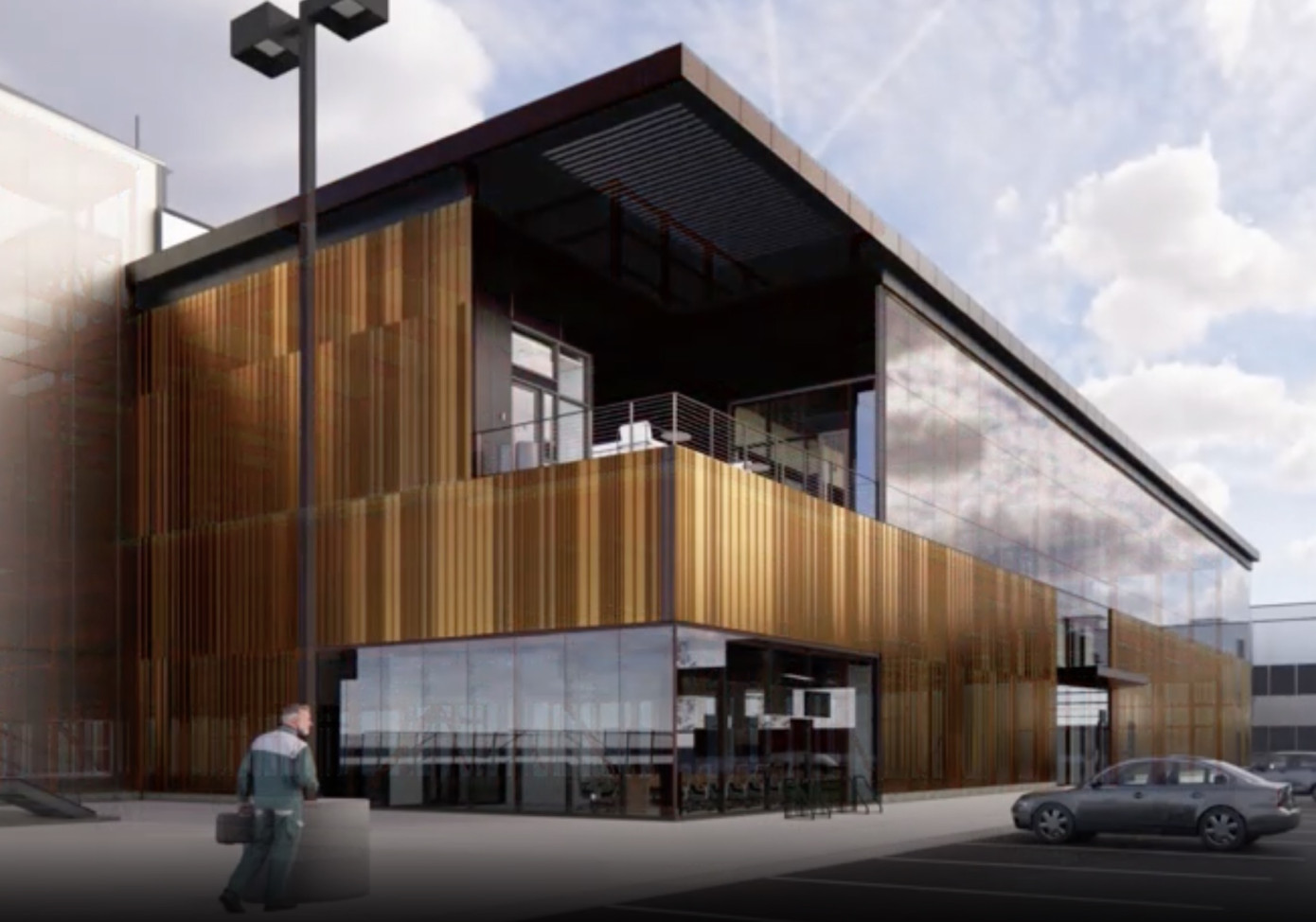In a bold experiment near a northern Virginia suburb, Microsoft is building its first datacenters using wood, a material chosen to drastically cut carbon emissions associated with traditional construction. The company is leveraging cross-laminated timber (CLT), a strong, fire-resistant wood, to construct two datacenters, reducing reliance on steel and concrete, major sources of global emissions. This hybrid model of mass timber, steel, and concrete is projected to cut embodied carbon emissions by 35% compared to steel-based construction and by 65% compared to precast concrete.
Microsoft’s sustainability push has been gaining momentum since 2020, when it announced targets to become “carbon negative” by 2030 and to remove from the atmosphere all carbon the company has emitted since its 1975 founding by 2050. In May, Microsoft reported a 6.3% reduction in its direct emissions over the last three years. However, indirect emissions, generated from extracting, processing, and transporting materials, rose by 30.9%, driven largely by datacenter expansion and associated hardware. Indirect emissions pose a challenge, as they fall outside the company’s direct control, but Microsoft is pressing forward with various initiatives to address these emissions.
To support this shift, Microsoft has updated its contracts to require low-carbon materials in datacenter construction and has mandated that key suppliers use 100% carbon-free electricity by 2030. The company is also investing in innovative low-carbon building materials, including carbon-trapping concrete and hydrogen-powered steel. Additionally, Microsoft believes it may be one of the first in the U.S. to use engineered wood on a hyperscale in datacenter construction, reflecting a building trend that has already become a staple of green architecture in Europe.
Microsoft isn’t alone in pursuing these ambitious targets, as other major corporations and suppliers are also implementing carbon-reduction strategies. “A lot of our suppliers are on the same journey as we are,” says Richard Hage, Microsoft’s head of global strategy for datacenter engineering, highlighting that the broader industry is working toward lower-carbon materials.
Climate Innovation Fund supports green technology
To address systemic gaps in the availability of low-carbon solutions, Microsoft’s $1 billion Climate Innovation Fund, established in 2020, has so far committed $761 million to companies and technologies advancing the supply of climate solutions. According to Brandon Middaugh, who manages the Climate Innovation Fund, Microsoft’s investments focus on scalable technologies that can create wide-reaching impacts by 2030, including renewable energy, advanced building materials, sustainable fuels, and carbon removal.
These investments are complemented by Microsoft’s policy advocacy efforts to expand carbon-free energy infrastructure and modernize energy grids. With decarbonization a high priority, Microsoft is actively investing in low-carbon steel production, becoming an investor in Sweden-based Stegra (formerly H2 Green Steel), which plans to build a large-scale plant with an expected 95% reduction in emissions compared to conventional steelmaking. Stegra’s innovative process uses hydrogen produced from renewable sources, emitting only water vapor rather than carbon dioxide.
In addition, Microsoft has invested in Boston Metal, a company using renewable electricity to generate oxygen instead of carbon dioxide in steel production. The company is also backing Electric Hydrogen, a Massachusetts-based startup focused on splitting water into hydrogen and oxygen using electricity, contributing to the supply of green hydrogen for the steel industry.
Low-carbon concrete and other innovations
Reducing emissions in building materials extends to low-carbon concrete solutions, such as those developed by CarbonCure and Prometheus Materials, which use unique methods to trap carbon dioxide within concrete or replace traditional cement with materials derived from microalgae. Microsoft has started using CarbonCure’s concrete in select U.S. datacenters and is piloting Prometheus’ zero-carbon cement in the new Virginia datacenters.
CLT, typically made from spruce, pine, or Douglas fir, is stronger, lighter, and more stable than conventional wood. Microsoft’s use of sustainably sourced CLT will replace thick concrete floors and ceilings in the Virginia datacenters, with a thin layer of concrete added for durability and waterproofing. Prefabricated offsite, CLT can be installed faster and more safely than traditional steel, reducing construction time and labor costs. Although the cost of CLT can be 5% to 10% higher than traditional wood, its benefits in large projects often offset the cost difference.
According to David Swanson, a structural engineer for Microsoft’s datacenter projects, the use of CLT is part of ongoing cost-benefit analyses to determine the effectiveness and safety of new materials. “We’re constantly trying to validate the suitability of these novel materials for use in a datacenter environment,” Swanson said. Until low-carbon materials are widely available, Microsoft expects that achieving a net-zero carbon footprint will require careful planning and industry collaboration.
Leveraging Microsoft’s scale to drive change
Microsoft’s scale allows it to act as a “market mover” in promoting green construction materials, according to Thomas Hooker from the structural engineering firm Thornton Tomasetti, which collaborated on the Virginia datacenters. With its substantial purchasing power, Microsoft has the potential to accelerate industry-wide adoption of sustainable building methods.
By integrating low-carbon CLT in datacenter design and investing in advanced materials, Microsoft aims to establish a framework for sustainable construction. However, achieving net-zero carbon for datacenters and supply chains remains a complex challenge that requires balancing cost, material availability, and regulatory frameworks. As Jim Hanna, Microsoft’s sustainability lead for datacenter engineering, notes, “We have to be system thinkers across the entire value chain of these materials that go into our datacenters and the equipment that supplies our datacenters. That’s what makes it hard, but certainly not impossible.”
